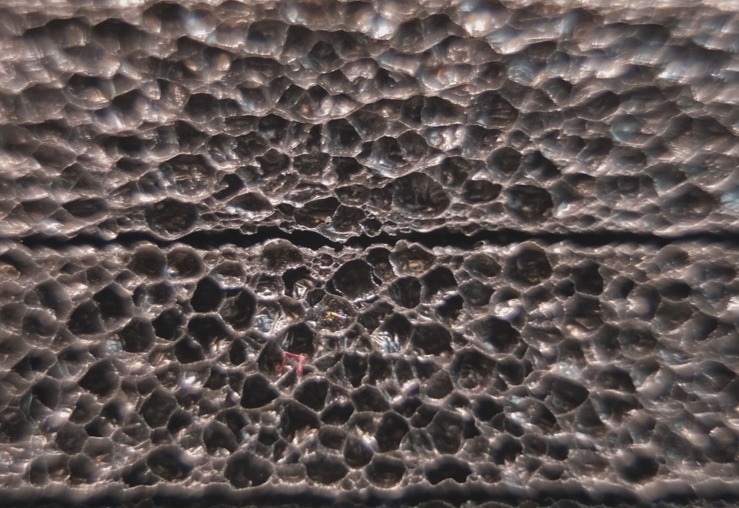In a recent article published in Light: Science & Applications, researchers from China developed a single-mode double-pulsed nanolaser utilizing self-assembled perovskite multiple quantum wells (MQWs).

Image Credit: moomin201/Shutterstock.com
The study presents a novel approach to achieving pulse-doubling in perovskite nanowire lasers, recognized for their potential in miniaturizing integrated optoelectronic devices. This research aims to enhance the understanding of laser dynamics and energy relaxation mechanisms in these advanced materials.
Background
Perovskite materials have gained attention for their unique optical properties and ability to serve as effective gain media in laser applications. While previous studies have demonstrated the capability of perovskite MQWs to amplify light, the intrinsic dynamics of micro-nanolasers and their specific cavity requirements for pulse multiplication remain inadequately explored.
This study addresses these gaps by investigating the mechanisms behind pulse doubling in perovskite nanowires.
The Current Study
The quasi-2D perovskite nanowires were synthesized using a solution-based self-assembly method. To facilitate the self-assembly process, the precursor solution was deposited onto a clean substrate using a spin-coating technique. Following deposition, the substrate was subjected to a thermal annealing to promote crystallization.
The morphology and structural properties of the synthesized nanowires were characterized using scanning electron microscopy (SEM) and transmission electron microscopy (TEM). SEM images were obtained to assess the surface morphology and dimensions of the nanowires, while TEM provided insights into the crystallinity and internal structure.
X-ray diffraction (XRD) analysis was performed to confirm the phase purity and crystallographic orientation of the perovskite nanowires. The XRD patterns were collected over a range of angles, and the resulting data were analyzed to identify the characteristic peaks corresponding to the perovskite structure.
The optical properties of the perovskite nanowires were investigated using photoluminescence (PL) spectroscopy. The samples were excited with a continuous-wave laser at a specific wavelength, and the emitted light was collected and analyzed using a spectrometer.
Time-resolved photoluminescence (TRPL) measurements were conducted to study the dynamics of exciton recombination and energy transfer processes. A pulsed laser source with a femtosecond pulse duration was employed for excitation, and the emitted PL was detected using a streak camera to capture the temporal evolution of the luminescence.
Lasing experiments were conducted using a home-built optical setup. The perovskite nanowires were optically pumped with a femtosecond laser operating at 400 nm. The pump fluence was varied to determine the lasing threshold and analyze the output characteristics of the nanolaser. The laser light was collected and directed through optical filters and lenses to isolate the lasing signal for further analysis.
Results and Discussion
Morphological analysis confirmed that the nanowires were well-structured, exhibiting a consistent shape and size. The synthesized quasi-2D perovskite nanowires exhibited a well-defined wire-like morphology, with a width of approximately 0.6 μm and a length of around 4.3 μm. The XRD patterns demonstrated distinct peaks corresponding to the perovskite phase, confirming the crystallinity of the nanowires.
The observed diffraction peaks aligned with the expected values for the quasi-2D perovskite structure. This uniformity is crucial as it enhances the optical feedback necessary for effective lasing. The smooth surfaces and defined ends of the nanowires suggest that they are well-suited for coherent light emission, an essential requirement for laser operation.
In terms of optical performance measured through PL spectra, the nanowires demonstrated a remarkable transition from spontaneous emission to lasing as the pump intensity increased. At lower intensities, the emitted light was broad and less organized, but as the intensity reached a certain threshold, the emission became sharper and more coherent. This shift indicates that the nanowires can effectively amplify light, a fundamental characteristic of laser materials.
The temperature-dependent PL spectroscopy further elucidated the exciton-phonon interactions within the nanowires. As the temperature increased, PL peaks exhibited broadening and asymmetry, attributed to phonon scattering and the emission of self-trapped excitons. These findings underscore the significant role of exciton-phonon interactions in influencing the optical properties of the nanowires.
The study also highlighted the dynamics of exciton behavior within the nanowires. Excitons, which are bound states of electrons and holes, migrate from smaller to larger quantum wells within the structure. This migration is essential for enhancing the efficiency of light emission. The rapid response of this process suggests the nanowires can quickly adapt to changes in excitation, which is beneficial for applications requiring rapid light pulses.
Conclusion
Zhao et al.'s research provides valuable insights into the mechanisms underlying pulse-doubling in perovskite nanowire lasers. By elucidating the energy relaxation processes and the role of exciton-phonon interactions, this study paves the way for the development of low-threshold ultrashort double-pulsed optoelectronic devices.
The findings contribute to the broader understanding of perovskite materials in laser applications and open new avenues for future research in integrated photonic systems.
Journal Reference
Zhao C., et al. (2024). Pulse-doubling perovskite nanowire lasers enabled by phonon-assisted multistep energy funneling. Light: Science & Application. DOI: 10.1038/s41377-024-01494-